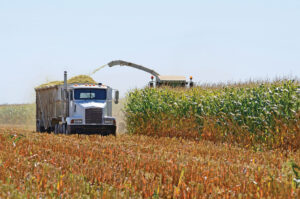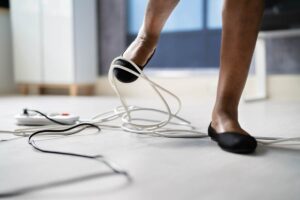If you put a quarter mile of pipe on wheels, connect some electric motors, pump water through this system and continuously move it around a 130-acre field soaking everything in site, you’ve just created a potential for someone to get electrocuted. It happened here in Illinois just a few years ago when two teenagers were killed, and four others were seriously hurt, while detasseling corn in a field with a center pivot irrigation system.
Several years ago a Nebraska rural electric cooperative conducted a series of electrical tests and inspections of electrically-driven center pivot systems with electric pump motors. The survey showed 37 percent were potentially hazardous because of the lack of a grounding conductor. Nearly 40 percent did not have a ground rod installed. More than 50 percent failed to have a fuse or a means of disconnection. Other hazardous situations were found, including loose connections, improper circuit and motor protection and deteriorated insulation.
A second series of inspections by a Nebraska state electrical inspector showed similar results. Of 77 systems inspected at the owners’ requests, 10 were classified as lethal, 38 were definitely hazardous and the remaining 29 were potentially hazardous. The 10 lethal systems had current flowing to ground at the time of the inspection or had almost killed someone shortly before the inspection. The National Electrical Code (NEC) had been violated in all 77 installations.
Safe Electricity and the electric cooperatives of Illinois advise owners and operators of irrigation equipment to check for and be aware of all potential electrical hazards. Owners and operators of irrigation systems should take precautions to help ensure safety and use the following tips to enhance the safety of those working around irrigation equipment:
• Make sure the irrigation system wiring is properly grounded. Before the start of each irrigation season, have a qualified electrician check the pump and wiring.
• Stay away from the piping during lightning activity. Keep an eye on weather forecasts so that you can plan to stay safely indoors during a thunderstorm. Consider installing lightning arresters to help protect your equipment from the damaging effects of lightning.
• If fuses continually blow or circuit breakers repeatedly trip, have a professional check the wiring. This could indicate a potential electrical hazard.
• Always shut off and lock the master electrical control switch before servicing the machine.
• Position the water jet streams so that there is no chance of them spraying onto power lines. If this happens, the entire system could become energized, creating a danger for anyone nearby.
Moving irrigation pipe near power lines often deadly
Common irrigation pipe is 30 feet in length, long enough to reach overhead power lines when lifted up. This lengthy aluminum pipe should not be stored near power lines.
However, irrigation equipment itself can be dangerous without contacting overhead lines. The combination of water and electricity can be just as deadly. The sprays of water from irrigation systems should not be near overhead power lines. Because the impurities in water serve as conductors of electricity, a stream of water reaching non-insulated wires will become the path for the deadly voltage and can energize the entire irrigation system.
Take some time to survey your surroundings before moving any long equipment. Look up and around you; note any power lines that could be close enough to come into contact with equipment and stay away. Always know the location of nearby electrical lines when working with irrigation equipment. Any contact between the irrigation equipment and nearby electrical lines could be fatal or cause serious injury.

Safe Electricity offers the following tips:
• Store unused irrigation pipes far away from power lines or electrical equipment.
• Position irrigation pipes at least 15 feet away from power lines.
• Avoid moving irrigation equipment on windy days when pipes could be blown into nearby power lines. Keep pipes horizontal to the ground rather than vertical to minimize the risk of contact with power lines.
• If an irrigation pipe comes in contact with a power line, never try to remove it yourself. Stay away from it and call your local electric utility for help.
For more information on electrical safety, visit SafeElectricity.org.









